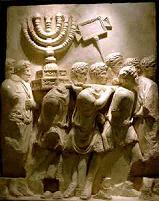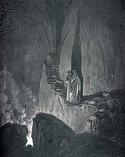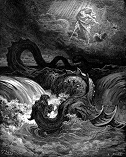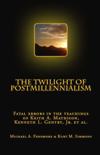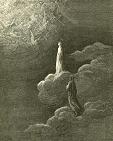Understanding the Voice of the Prophets
Kurt Simmons
II Peter 3
In this article we discuss the elements of II Peter 3, and decide they are not reference to the Mosaic law or temple ritual.
Obstacles to Understanding
There are only two or three truly difficult passages that serve as obstacles to full preterism. These are the “eschatological change” of I Cor. 15:51-55, the “rapture” of I Thess. 4:16, 17, and the language of “cosmic conflagration” in II Pet. 3:7-12. The chief difficulty of the first two passages is the tendency to assume that the catching away of living saints to heaven is or was to be substantially simultaneous with the resurrection of the dead. However, once that assumption is dispelled, it becomes clear that Paul is in fact describing the process by which the living are translated one-by-one at the time of death.
The chief difficulty with II Peter 3 is the tendency to take the language literally. This can be overcome by comparing Peter’s language with established usage in the Old Testament and providing a suitable explanation for the symbolism.
Comparing II Peter 3 with Old Testament Usage
The Old Testament passage that bears the greatest overall similarity to II Peter 3:10-12 is probably Isaiah 341-10. This is a prophecy of God’s judgment and wrath upon the nations of the ancient world, first by the Babylonians, then the Medes and Persians. The time of wrath is world-wide (“all nations”). However, while it the prophecy opens by announcing wrath upon all nations, it narrows as it progresses, bringing its focus to bear upon Edom (Bozrah, Idumea) for that nation’s part in helping destroy Jerusalem (see Obadiah 10-16).
|
A list will reveal the following points of contact between these
two prophecies:
II
Peter 3:10-12
Isaiah
34:1-10
Day of the Lord
Heavens & Earth
Heavens pass away
Earth burned
Heavens dissolved
Day of Vengeance
Heavens & Earth
Constellations dissolved
Mountains melt
Land turned to brimstone
Streams turned to pitch
Heavens dissolved
The merest consideration will show that the language of Isaiah is
figurative and describes a time of world-wrath through the agency of
men and nations, whose armies exact the vengeance of God. The
points of contact between Isaiah and Peter should suffice to show
that the latter is also figurative, and that Peter in no way intends
us to understand that the physical cosmos would be consumed at
Christ’s coming. Indeed, Peter all but says this very thing
when he states that judgment he wrote about was for the “perdition
of ungodly men” (v. 7). In other words, it is men who oppose
the gospel that would be destroyed; appeal to the heavens and earth
is merely the stuff of poetic apparatus. Here are two more
passages for comparison. This time, let’s use a passage from
Matthew:
Matthew 24:29, 30
Isaiah
13:9-13
Immediately after the tribulation of
those days shall the sun be darkened, and the moon
shall not give her light, and the stars shall fall
from heaven, and the powers of the heavens shall be
shaken. And then shall appear the sign of the
Son of man in heaven: and then shall all the tribes
of the earth mourn, and they shall see the Son of
man coming in the clouds of heaven with power and
great glory.
Behold, the day of the Lord cometh,
cruel both with wrath and fierce anger, to lay the
land desolate: and he shall destroy the sinners
thereof out of it. For the stars of heaven and the
constellations thereof shall not give their light:
the sun shall be darkened in his going forth, and
the moon shall not cause her light to shine. And I
will punish the world for their evil, and the wicked
for their iniquity...Therefore I will shake the
heaven, and the earth shall remove out of her place,
in the wrath of the Lord of hosts and in the day of
his fierce anger.
The Lord’s statements recorded by Matthew are almost exact quotes
from Isaiah’s prophecy about the judgment God would visit upon
Babylon and the world through the Mede-Persian Empire, which swept
like a great storm from the Elam and the Black Sea in the
north-east, to Egypt and Red Sea in the south-west, encompassing the
whole civilized world. The points of contact between the two
passages include the following:
Matthew 24:29, 30
Isaiah 13:9-13
Day of the Lord
Heavens & Earth
Sun & moon darkened
World punished
Heavens shaken, constellations fall
Christ comes in clouds
Day of the Lord
Heavens & Earth
Sun & moon darkened
World punished
Heavens shaken, earth moved
Lord comes in wrath
Let’s make one more comparison and then conclude. This time we
will look at language from Ezekiel regarding God’s judgment upon
Egypt by Babylon:
Luke 21:25-27
Ezekiel 30:3-19
And there shall be signs in the sun, and in the
moon, and in the stars; and upon the earth distress
of nations, with perplexity; the sea and the waves
roaring; men’s hearts failing them for fear, and for
looking after those things which are coming on the
earth: for the powers of heaven shall be shaken. And
then shall they see the Son of man coming in a cloud
with power and great glory.
The day is near, even the day of the Lord is near, a
cloudy day; it shall be the time of the heathen.
And the sword shall come upon Egypt, and great pain
shall be in Ethiopia...And I will make the rivers
dry, and sell the land into the hand of the wicked:
and I will make the land waste, and all that is
therein...I will set fire in Egypt: Sin shall have
great pain, and No shall be rent asunder...At
Tehphnehes also the day shall be darkened, when I
shall break there the yoke of Egypt: and the pomp of
her strength shall cease in her: as for her, a cloud
shall cover her, and her daughters shall go into
captivity.
Luke here repeats the prophecy recorded in Matthew’s account of the
Olivet Discourse, but so expands the language as to make clear that
much more than the fall of Jerusalem was involved in the wrath that
would overtake the first-century world. In each of the
passages compared, we find a day of the Lord, clouds, heavens and
earth, stars moved out of their courses, fire, darkness and dread of
doom. Yet, in each case the wrath was confined to men and nations,
not the physical cosmos or its elements. Reading these
together should make clear that II Pet. 3:10-12 is simply one more
in the long line of hyperbolic speech used by the prophets to
describe heaven’s rod upon a rebellious world. What are the
Heavens & Earth?
Having compared Peter with the prophets and seen that he continues
a long established tradition of figurative speech in describing
world events, let us next interpret his symbology.
Preterists have long held that the “heavens and earth” of II Pet.
3:10-12 are allusions to Judea and the Mosaic law. This is due
to a tendency to interpret the eschaton solely in terms of the fall
of Jerusalem (“locally and covenantally”). So many passages
emphasize God’s wrath upon the Jews for the murder of Christ and
persecution of the gospel that we tend to narrow our focus and
overlook events in the rest of the Roman Empire. This is
unfortunate. If there is anything that is clear it is that the
second coming was a time of world-wrath, in no way confined to
Palestine or the Jews. Daniel two and seven are second coming
passages and do not mention the Jews at all. Many New
Testament epistles speak of Christ’s coming and the saints’ need to
be in readiness, which could have no meaning to churches in Europe
and Asia if the second coming was limited to the fall of Jerusalem.
Thessalonica was in the province of Macedonia, yet Paul told the
church there that they would find relief from their persecutors at
Christ’s coming (II Thess. 1:4-10). Paul told the Athenians,
also in Europe, that God was “about to judge the world” through
Jesus Christ (Acts 17:31). John wrote to the seven churches of Asia,
exhorting them to abide faithful against Christ’s soon coming.
These churches are a thousand miles from Jerusalem. Yet, Jesus told
them that his coming would directly impact them. Finally,
Peter’s epistle is written to churches in the vicinity of the Black
Sea where Christians were suffering, or soon would suffer,
persecution. How would the fall of Jerusalem help them?
Wasn’t it rather the changes and alterations in the Roman government
that would bring relief from their persecutions and not the fall of
Jerusalem? These and other considerations argue forcibly
against the notion that the second coming was somehow confined to
Palestine.
What then do the “heavens and earth” symbolize? If we can
think of the world like the canopy of heaven in which governments
provide order to the world of men in the way that constellations are
hung in the sky and regulate the cycles of nature and the revolution
of seasons, we can see how the heavens and earth describe things
social and political. The best explanation we have encountered
for the symbolism of the heavens and earth is Sir Isaac Newton’s:
"The figurative language of the prophets is taken from the
analogy between the world natural and an empire or kingdom
considered as a world politic. Accordingly, the world natural,
consisting of heaven and earth, signifies the whole world politic,
consisting of thrones and people, or so much of it as is considered
in prophecy; and the things in that world signify the analogous
things in this. For the heavens and the things therein signify
thrones and dignities, and those who enjoy them: and the earth, with
the things thereon, the inferior people; and the lowest parts of the
earth, called Hades or Hell, the lowest or most miserable part of
them. Great earthquakes, and the shaking of heaven and earth, are
put for the shaking of kingdoms, so as to distract and overthrow
them; the creating of a new heaven and earth, and the passing of an
old one; or the beginning and end of a world, for the rise and ruin
of a body politic signified thereby. The sun, for the whole species
and race of kings, in the kingdoms of the world politic; the moon,
for the body of common people considered as the king's wife; the
stars, for subordinate princes and great men; or for bishops and
rulers of the people of God, when the sun is Christ. Setting of the
sun, moon, and stars; darkening the sun, turning the moon into
blood, and falling of the stars, for the ceasing of a kingdom." (Observations
on the Prophecies of Daniel, Part i. chap. ii)
To receive Kurt Simmons’ e-mail newsletter, The Sword & The Plow, click the Subscribe link:
All rights reserved.
